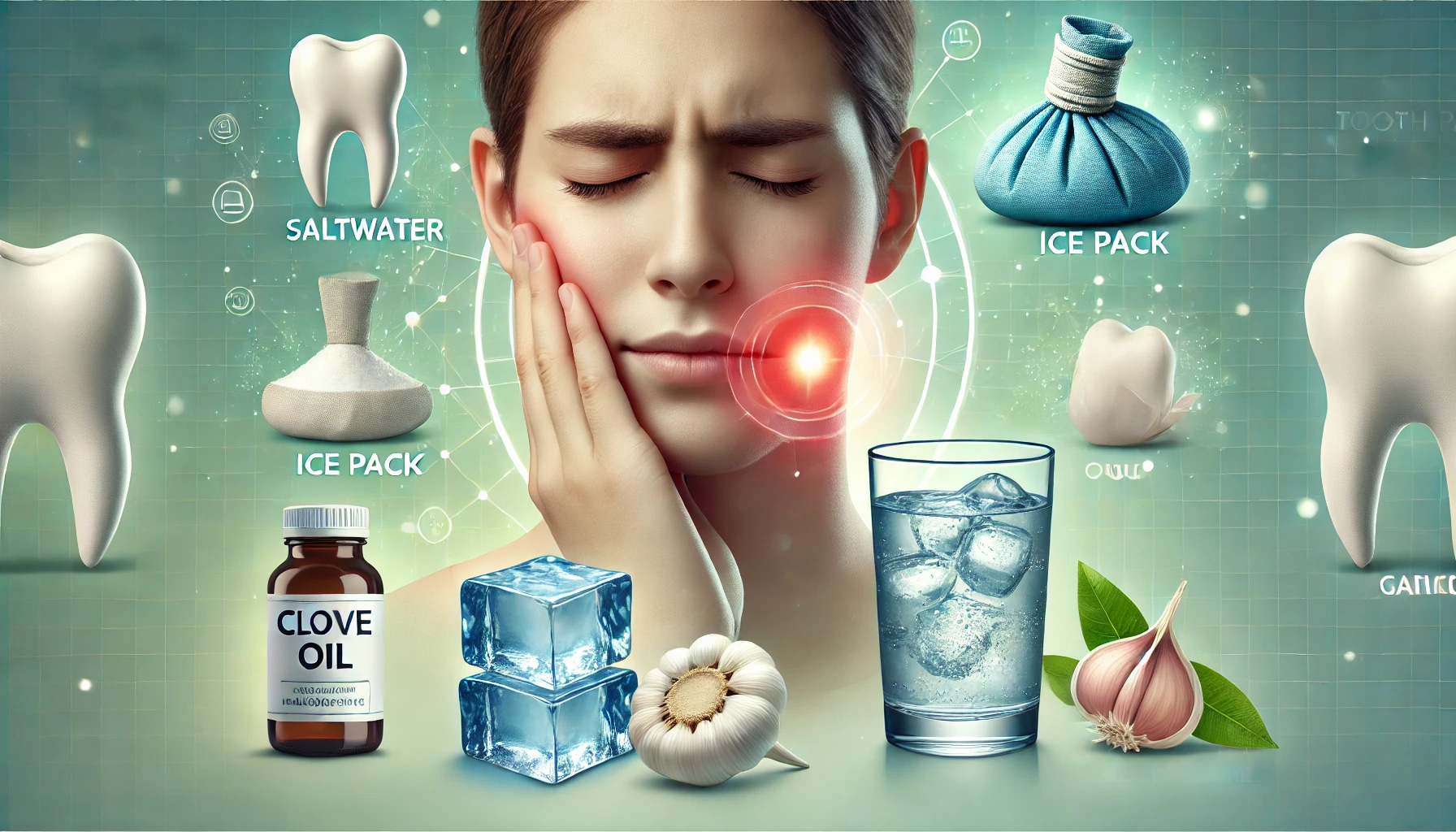Tooth pain can strike at any time, causing discomfort and disrupting your daily activities. Whether it’s a sharp, stabbing pain or a dull ache, finding relief quickly is essential. Here’s a detailed guide to help you manage tooth pain effectively.
Immediate Relief Tips
1.Rinse with Warm Saltwater
Saltwater is a natural disinfectant that can reduce inflammation and clean the affected area.
- How to use: Mix 1/2 teaspoon of salt in a glass of warm water. Swish it around your mouth for about 30 seconds and spit it out. Repeat as needed.
2. Apply a Cold Compress
A cold compress can numb the area and reduce swelling.
- How to use: Wrap a bag of ice or a cold pack in a thin cloth. Apply it to the outside of your cheek near the painful area for 15-20 minutes. Repeat every few hours.
3. Use Over-the-Counter Pain Relievers
Non-prescription medications like ibuprofen or acetaminophen can provide temporary relief.
- Note: Always follow the dosage instructions on the packaging and consult your doctor if you have any health conditions.
4. Clove Oil Application
Clove oil has natural analgesic and antibacterial properties.
- How to use: Dab a small amount of clove oil onto a cotton ball and gently press it against the painful tooth. Avoid swallowing the oil.
5. Garlic Paste
Garlic has antimicrobial properties that can help relieve pain and fight infection.
- How to use: Crush a garlic clove into a paste and apply it to the affected tooth. Let it sit for a few minutes before rinsing.
Long-Term Solutions
1. Visit a Dentist
Tooth pain is often a symptom of underlying issues like cavities, gum disease, or infections. A dentist can diagnose and treat the root cause effectively.
- When to see a dentist: If the pain persists for more than a day or two, worsens, or is accompanied by fever, swelling, or difficulty swallowing.
2. Maintain Good Oral Hygiene
Prevent future tooth pain by practicing proper oral care:
- Brush your teeth twice daily with fluoride toothpaste.
- Floss daily to remove food particles and plaque.
- Use an antibacterial mouthwash.
- Replace your toothbrush every 3-4 months.
3. Avoid Trigger Foods
Certain foods can worsen tooth pain, especially if you have sensitivity.
- Avoid very hot, cold, sugary, or acidic foods and drinks.
4. Use a Desensitizing Toothpaste
Special toothpastes for sensitivity can help block pain signals to the nerves.
- How to use: Brush with it regularly, focusing on the sensitive areas.
Home Remedies for Additional Relief
1. Peppermint Tea Bags
Peppermint has a cooling effect that can soothe tooth pain.
- How to use: Steep a tea bag in hot water, let it cool down, and place it on the painful area.
2. Hydrogen Peroxide Rinse
This can help kill bacteria and reduce inflammation.
- How to use: Mix equal parts of 3% hydrogen peroxide and water. Swish it in your mouth for 30 seconds and spit it out. Do not swallow.
3. Vanilla Extract
The alcohol in vanilla extract has numbing properties.
- How to use: Dab a small amount onto a cotton ball and apply it to the affected tooth.
Preventive Measures
- Schedule regular dental check-ups.
- Limit sugary snacks and drinks.
- Drink plenty of water to rinse away food particles and bacteria.
- Wear a mouthguard if you grind your teeth at night.
When to Seek Emergency Care
In some cases, tooth pain can indicate a serious condition that requires immediate attention:
- Severe swelling or redness in your gums.
- Pain spreading to your jaw, ear, or neck.
- High fever or difficulty breathing.
Conclusion
While these methods can provide quick relief, they are not a substitute for professional dental care. Tooth pain often signals a deeper issue that needs to be addressed by a dentist. By combining immediate remedies with long-term solutions and preventive care, you can manage and avoid tooth pain effectively.





